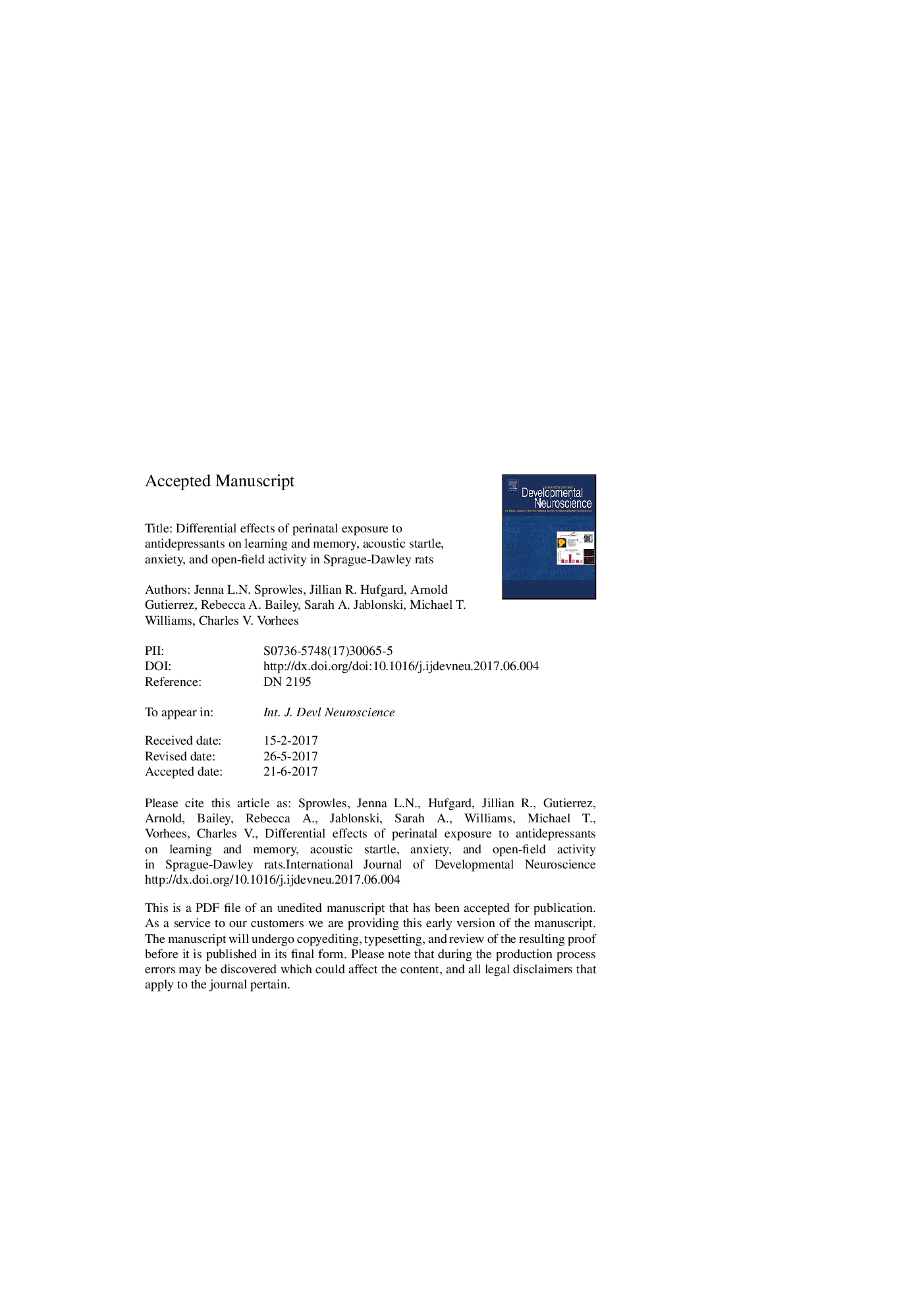| Article ID | Journal | Published Year | Pages | File Type |
|---|---|---|---|---|
| 5585746 | International Journal of Developmental Neuroscience | 2017 | 82 Pages |
Abstract
Most antidepressants inhibit monoamine reuptake. Selective serotonin (5-HT) reuptake inhibitors (SSRIs) act on the 5-HT transporter (SERT) whereas norepinephrine-dopamine reuptake inhibitors (NDRIs) act on the norepinephrine and dopamine transporters. Epidemiological reports link SSRI use during pregnancy to an increased prevalence of autism spectrum disorder (ASD). We previously showed that perinatal exposure to the SSRI citalopram (CIT) results in rodent offspring that exhibit a number of behaviors consistent with an ASD-like phenotype. The present study examined the effect of perinatal exposure to CIT (at a lower dose), another SSRI, fluoxetine (FLX), and an NDRI, bupropion (BUP). Gravid Sprague-Dawley rats were subcutaneously injected twice per day (6Â h apart) with 5Â mg/kg CIT, 5Â mg/kg FLX, 15Â mg/kg BUP, or saline (SAL) from embryonic day (E) 6-21, and directly to the pups from postnatal day (P) 1-20. As adults, one male/female from each litter was given one of a series of tests. Both SSRI-exposed groups showed spatial learning deficits in Morris and radial water mazes, increased marble burying, increased acoustic startle, hypoactivity, and attenuated activity to the stimulating effect of the NMDA-R antagonist MK-801. The BUP-exposed group showed a reduction in elevated zero-maze quadrant entries and increased stimulated open-field activity following (+)-amphetamine challenge. These results reinforce concern about the use of antidepressants during pregnancy and highlight how the two classes of drugs produce different constellations of effects with more effects associated with the SSRIs. Further investigation into how antidepressants alter brain development leading to enduring adverse neurobehavioral effects is warranted.
Related Topics
Life Sciences
Biochemistry, Genetics and Molecular Biology
Developmental Biology
Authors
Jenna L.N. Sprowles, Jillian R. Hufgard, Arnold Gutierrez, Rebecca A. Bailey, Sarah A. Jablonski, Michael T. Williams, Charles V. Vorhees,
